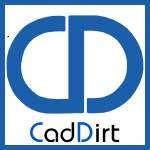My Chromebook Experiment
/On June 15, 2011 Google's official Chrome operating system was finally released and hit the market on a couple of models by Samsung and Acer. ChromeOS is a lightweight operating system built on a striped down version of Linux to run the Chrome browser.
Since I live on Google and our company is also on Google Apps, I wanted to see how feasable it was to function on a device so forward thinking. Obviously this is not a replacement device for a superuser or someone who has specific needs like running SolidWorks or doing long form video editing. What it does offer is a sleak device that boots in 8 seconds, (6 to the login screen) from the off state and gets you on the Internet to do what we all do there, browse, research, email, socialize, share...and the list goes on and on.
With so many companies attempting to move today's desktop applications like video editing, engineering tools like CAD and other CAE applications, even going as far as hosting full sofware developement environments to offload the resources need by the user.
Personally I have been interested in this for a couple years and had purchased a eee701 on Amazon for about $140 USD and installed ChromiumOS, the open source project of Google's ChromeOS, in order to get a feel for how this could be. The early days were rough, as many open source tools are at first, but I have to say Google has really moved this product forward and it is a pretty good V1 product. Don't get me wrong, there is still room for improvement but instead of focusing on what an internet browser only operating system can't do, focus on what it can.
So over the next month or so I am going to put the 11" Acer Chromebook to the test and see how it stacks up to other secondary computing devices like tablets and smartphones. I will also be testing a few of the CAD services that are available in the browser to see how many really understand developing for the web, using standard technologies and HTML5, Java and Ajax instead of relying on plugins or embedded viewers. Oh and yes this post was written on my Chromebook! Wish me luck! ~Lou







